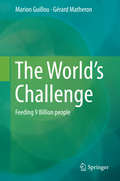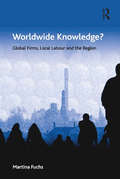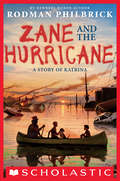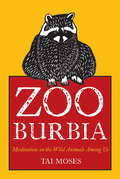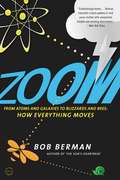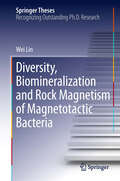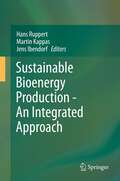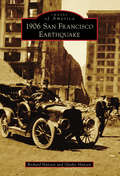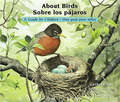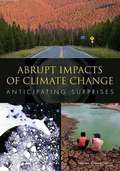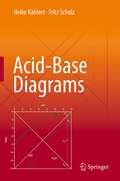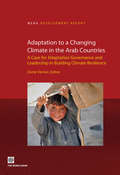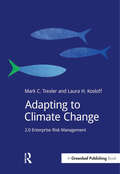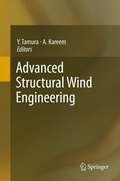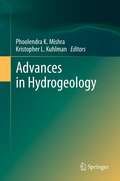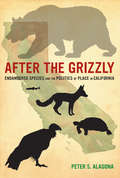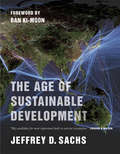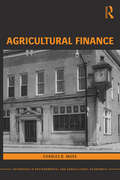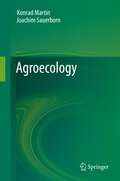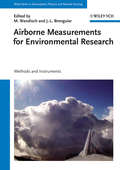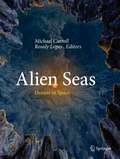- Table View
- List View
The World's Challenge
by Marion Guillou Gérard MatheronIf a global population of 9 billion by 2050 is to be fed adequately, more food must be produced and this in keeping with increasingly stringent standards of quality and with respect for the environment. Not to mention the land that must be set aside for the production of energy resources, industrial goods, carbon storage and the protection of biodiversity.
Worldwide Knowledge?: Global Firms, Local Labour and the Region (Economic Geography Series)
by Martina FuchsPutting forward a comprehensive view of knowledge with a specific perspective on place and space, this book provides a new perspective on the globalisation of knowledge. Crossing disciplinary boundaries, the principal agenda of this volume is to open up a perspective ’beyond knowledge’ - i.e. beyond the interpretation of knowledge as scientific-technical knowledge. Author Martina Fuchs introduces further kinds of knowledge and interpretation which influence managements’ perception of globalisation and therefore the knowledge which is going global. She refers to knowledge in the sense of experiences, competencies in the production and labour process, as well as mutually shared mental constructs which are embedded in a context of understanding and interpretation. Exploring beyond the meaning of worldwide knowledge as general open access knowledge, this book also discusses barriers to knowledge, problems of transfer, and the influence of governance and control.
Zane and the Hurricane: A Story Of Katrina
by Rodman PhilbrickNewbery Honor author Rodman Philbrick presents a gripping yet poignant novel about a 12-year-old boy and his dog who become trapped in New Orleans during the horrors of Hurricane Katrina. <p><P> Zane Dupree is a charismatic 12-year-old boy of mixed race visiting a relative in New Orleans when Hurricane Katrina hits. Unexpectedly separated from all family, Zane and his dog experience the terror of Katrina's wind, rain, and horrific flooding. <P>Facing death, they are rescued from an attic air vent by a kind, elderly musician and a scrappy young girl--both African American. The chaos that ensues as storm water drowns the city, shelter and food vanish, and police contribute to a dangerous, frightening atmosphere, creates a page-turning tale that completely engrosses the reader. <p> Based on the facts of the worst hurricane disaster in U.S. history, Philbrick includes the lawlessness and lack of government support during the disaster as well as the generosity and courage of those who risked their lives and safety to help others. Here is an unforgettable novel of heroism in the face of truly challenging circumstances.
Zooburbia: Meditations on the Wild Animals Among Us
by Dave Buchen Tai MosesTo be alienated from animals is to live a life that is not quite whole, contends nature writer Tai Moses in Zooburbia: Meditations On The Wild Animals Among Us. Urban and suburban residents share their environment with many types of wildlife: squirrels, birds, spiders, and increasingly lizards, deer, and coyote. Many of us crave more contact with wild creatures, and recognize the small and large ways animals enrich our lives, yet don't notice the animals already around us.Zooburbia reveals the reverence that can be felt in the presence of animals and shows how that reverence connects us to a deeper, better part of ourselves. A lively blend of memoir, natural history, and mindfulness practices, Zooburbia makes the case for being mindful and compassionate stewards--and students--of the wildlife with whom we coexist. With lessons on industriousness, perseverance, presence, exuberance, gratitude, aging, how to let go, and much more, Tai's vignettes share the happy fact that none of us is alone and separate, and that our teachers are right in front of us. We need only go outdoors with our eyes and ears open to find a rapport with the animal kingdom. Zooburbia is a magnifying lens turned to our everyday environment, reminding us that we, as individuals and as a species, are not alone.Illustrated by Dave Buchen with original black and white wildlife linocuts.
Zoom: How Everything Moves
by Bob BermanFrom the speed of light to moving mountains--and everything in between--ZOOM explores how the universe and its objects move.If you sit as still as you can in a quiet room, you might be able to convince yourself that nothing is moving. But air currents are still wafting around you. Blood rushes through your veins. The atoms in your chair jiggle furiously. In fact, the planet you are sitting on is whizzing through space thirty-five times faster than the speed of sound.Natural motion dominates our lives and the intricate mechanics of the world around us. In ZOOM, Bob Berman explores how motion shapes every aspect of the universe, literally from the ground up. With an entertaining style and a gift for distilling the wondrous, Berman spans astronomy, geology, biology, meteorology, and the history of science, uncovering how clouds stay aloft, how the Earth's rotation curves a home run's flight, and why a mosquito's familiar whine resembles a telephone's dial tone.For readers who love to get smarter without realizing it, ZOOM bursts with science writing at its best.
Diversity, Biomineralization and Rock Magnetism of Magnetotactic Bacteria
by Wei LinMagnetotactic bacteria (MTB) synthesize intracellular nano-sized minerals of magnetite and/or greigite magnetosomes for magnetic orientation. They play important roles in global iron cycling and sedimentary magnetism, and have a broad range of potential applications in both biotechnological and biomedical fields. However, because the majority of MTB in nature remain unculturable, our understanding of these specific bacteria remains fairly limited. This thesis describes the development of a novel approach for effectively collecting, purifying and characterizing uncultivated magnetotactic bacteria. The diversity, genomic information and rock magnetic properties of various uncultivated MTB are investigated and characterized using a combination of biological and geophysical methods. The results will lead to a better understanding of the biogeography and biomineralization mechanisms of MTB in nature, and improve our knowledge of the contributions of MTB to biogeochemical cycles of elements and sedimentary magnetism. Dr. Wei Lin works at the Institute of Geology and Geophysics, Chinese Academy of Sciences, China
Sustainable Bioenergy Production - An Integrated Approach
by Hans Ruppert Jens Ibendorf Martin KappasThis book focuses primarily on the advantages and implications of sustainable bioenergy production in terms of ensuring a more sustainable world despite its growing energy demands. It addresses a new concept that focuses on the interactions between different uses of agricultural land (for example, agriculture for food, forage or energy and nature conservation) and their ecological, economic and societal impacts. This research concept provides new insights into the competition for resources and the synergies between different land uses. This book seeks to improve people's understanding of bioenergy's potentials for the future. It will be of interest not only to those involved in sustainable energy, but also to environmental planners, agriculture and soil specialists, and environmental policy-makers.
1906 San Francisco Earthquake (Images of America)
by Richard Hansen Gladys HansenOne of the greatest disasters of the twentieth century, in words and photos. The Great Earthquake and Fire of 1906 was an unparalleled catastrophe in the history of San Francisco. More than 4.5 square miles of the city burned and crumbled into a windswept desert of desolation. This book is filled with remarkable images, from before the earthquake through the blaze and into the rebuilding. With stories from survivors, and extensive photographs of sites from the waterfront in the east to Golden Gate Park in the west, the marina in the north to the Mission District in the south, readers can gain a vivid sense of this major historical event and how it affected one of America&’s greatest cities.
About Birds / Sobre los pájaros: A Guide for Children / Una guía para niños (About. . . #17)
by Cathryn SillAn award-winning, educator-approved first book on birds.In this simple volume, educator and author Cathryn Sill uses clear, easy-to-understand language to teach children what birds are, what they do, and how they live. Noted wildlife illustrator John Sill provides beautifully detailed, realistic paintings to showcase the birds' diverse and natural worlds, and an afterword provides more details about each bird and inspires further learning.
Abrupt Impacts of Climate Change
by Committee on Understanding and Monitoring Abrupt Climate Change and Its Impacts National Research Council Board on Atmospheric Sciences and Climate Division on Earth and Life StudiesClimate is changing, forced out of the range of the past million years by levels of carbon dioxide and other greenhouse gases not seen in the Earth's atmosphere for a very, very long time. Lacking action by the world's nations, it is clear that the planet will be warmer, sea level will rise, and patterns of rainfall will change. But the future is also partly uncertain -- there is considerable uncertainty about how we will arrive at that different climate. Will the changes be gradual, allowing natural systems and societal infrastructure to adjust in a timely fashion? Or will some of the changes be more abrupt, crossing some threshold or "tipping point" to change so fast that the time between when a problem is recognized and when action is required shrinks to the point where orderly adaptation is not possible? Abrupt Impacts of Climate Change is an updated look at the issue of abrupt climate change and its potential impacts. This study differs from previous treatments of abrupt changes by focusing on abrupt climate changes and also abrupt climate impacts that have the potential to severely affect the physical climate system, natural systems, or human systems, often affecting multiple interconnected areas of concern. The primary timescale of concern is years to decades. A key characteristic of these changes is that they can come faster than expected, planned, or budgeted for, forcing more reactive, rather than proactive, modes of behavior. Abrupt Impacts of Climate Change summarizes the state of our knowledge about potential abrupt changes and abrupt climate impacts and categorizes changes that are already occurring, have a high probability of occurrence, or are unlikely to occur. Because of the substantial risks to society and nature posed by abrupt changes, this report recommends the development of an Abrupt Change Early Warning System that would allow for the prediction and possible mitigation of such changes before their societal impacts are severe. Identifying key vulnerabilities can help guide efforts to increase resiliency and avoid large damages from abrupt change in the climate system, or in abrupt impacts of gradual changes in the climate system, and facilitate more informed decisions on the proper balance between mitigation and adaptation. Although there is still much to learn about abrupt climate change and abrupt climate impacts, to willfully ignore the threat of abrupt change could lead to more costs, loss of life, suffering, and environmental degradation. Abrupt Impacts of Climate Change makes the case that the time is here to be serious about the threat of tipping points so as to better anticipate and prepare ourselves for the inevitable surprises.
Acid-Base Diagrams
by Heike Kahlert Fritz ScholzUnderstanding acid-base equilibria made easy for students in chemistry, biochemistry, biology, environmental and earth sciences. Solving chemical problems, be it in education or in real life, often requires the understanding of the acid-base equilibria behind them. Based on many years of teaching experience, Heike Kahlert and Fritz Scholz present a powerful tool to meet such challenges. They provide a simple guide to the fundamentals and applications of acid-base diagrams, avoiding complex mathematics. This textbook is richly illustrated and has full color throughout. It offers learning features such as boxed results and a collection of formulae.
Acquisition and Analysis of Terrestrial Gravity Data
by Leland Timothy Long Ronald Douglas KaufmannGravity surveys have a huge range of applications, indicating density variations in the subsurface and identifying man-made structures, local changes of rock type or even deep-seated structures at the crust/mantle boundary. This important one-stop book combines an introductory manual of practical procedures with a full explanation of analysis techniques, enabling students, geophysicists, geologists and engineers to understand the methodology, applications and limitations of a gravity survey. Filled with examples from a wide variety of acquisition problems, the book instructs students in avoiding common mistakes and misconceptions. It explores the increasing near-surface geophysical applications being opened up by improvements in instrumentation and provides more advance-level material as a useful introduction to potential theory. This is a key text for graduate students of geophysics and for professionals using gravity surveys, from civil engineers and archaeologists to oil and mineral prospectors and geophysicists seeking to learn more about the Earth's deep interior.
Adaptation to a Changing Climate in the Arab Countries: A Case for Adaptation Governance and Leadership in Building Climate Resilience
by Dorte VernerIn the Arab countries, climate change is a risk to poverty reduction and economic growth, threatening to unravel many of the development gains that have been achieved. The Arab Region is already suffering adverse consequences from climate variability and change. This book provides information on climate change and its impact in the Arab Region, as well as technical guidance on climate adaptation options for policy makers. The areas addressed include the economic impacts of climate change (as measured by the reduction in household income and GDP); the impacts of climate change on the water, health, and tourism sectors; livelihoods and well-being in rural and urban areas; biodiversity; disaster risk management; as well as gender and other social relations. The report is written through a participatory and collaborative process, led by the World Bank in partnership with the League of Arab States, incorporating both regional and international experts on the topics.
Adapting to Climate Change: 2.0 Enterprise Risk Management (Doshorts Ser.)
by Mark Trexler Laura KosloffMost companies do not yet recognize what it means to adapt to future climate change, and do not yet see it as a business priority. Adapting to Climate Change tackles two key questions facing decision makers: 1) Is adaptation worth it to me? and 2) If it is worth it, can I really tackle it? If a company has reason to worry about the potential impacts of weather on its operations and supply chains, it probably has cause to worry about climate change. However, "adapting to the weather" is not the same as incorporating climate change adaptation into corporate planning. In the former a company is managing conditions they are already experiencing. The latter involves preparing for forecasted impacts of climate change. Focusing on today’s weather and not tomorrow’s climate leaves a lot of risk on the table, especially if the climate continues to change faster than many climate models have projected. The uncertainties associated with forecasting climate change on a timeframe and at a scale that is relevant to corporate decision making can appear daunting. It is not necessary, however, to have perfect information to advance corporate preparedness for and resilience to climate change. Companies can improve their ability to make robust decisions under conditions of uncertainty without perfect information. A Bayesian approach to reducing uncertainty over time can cost-effectively support companies in understanding and managing many potential climate risks and can avoid the need to depend on future predictions. Instead, initial effort can focus on where a company will have confidence in its analysis and the ability to influence its level of risk, namely in assessing its exposure and vulnerability to climate hazards. As the hazards themselves become more clear, risk management strategies can be quickly adapted.
Adaptive Materials and Structures
by Division On Engineering Physical SciencesAdaptive Materials and Structures
Addressing Climate Change in Local Water Agency Plans: Demonstrating a Simplified Robust Decision Making Approach in the California Sierra Foothills
by David G. Groves Evan Bloom David R. Johnson David Yates Vishal MehtaThis report describes an approach for planning under deep uncertainty, Robust Decision Making (RDM), and demonstrates its use by the El Dorado Irrigation District (EID). Using RDM, the authors and EID tested the robustness of current long-term water management plans and more robust alternatives across more than 50 futures reflecting different assumptions about future climate, urban growth, and the availability of important new supplies.
Advanced Structural Wind Engineering
by Yukio Tamura Ahsan KareemThis book serves as a textbook for advanced courses as it introduces state-of-the-art information and the latest research results on diverse problems in the structural wind engineering field. The topics include wind climates, design wind speed estimation, bluff body aerodynamics and applications, wind-induced building responses, wind, gust factor approach, wind loads on components and cladding, debris impacts, wind loading codes and standards, computational tools and computational fluid dynamics techniques, habitability to building vibrations, damping in buildings, and suppression of wind-induced vibrations. Graduate students and expert engineers will find the book especially interesting and relevant to their research and work.
Advances in Hydrogeology
by Kristopher L. Kuhlman Phoolendra K. MishraThis book represents different types of progress in hydrogeology, including conceptualization changes, different approaches to simulating groundwater flow and transport new hydrogeophysical methods. Each chapter extends or summarizes a recent development in hydrogeology, with forward-looking statements regarding the challenges and strengths that are faced. While the title and scope is broad, there are several sub-themes that connect the chapters. Themes include theoretical advances in conceptualization and modeling of hydrogeologic problems. Conceptual advances are further tempered by insights arising from observations from both field and laboratory work.
The Adventures Of Sammy The Wonder Dachshund: Sammy In Space
by Jonathan D. MillerSammy a Fact-Checker for the Internet, arrives at work one day. He is being sent on the mission of his dreams: a journey into outer space and goes through astronaut training, blasts off to explore the universe. He learns an important lesson about dreams, dedication, and hard work.
After the Grizzly: Endangered Species and the Politics of Place in California
by Peter S. AlagonaThoroughly researched and finely crafted, After the Grizzly traces the history of endangered species and habitat in California, from the time of the Gold Rush to the present. Peter S. Alagona shows how scientists and conservationists came to view the fates of endangered species as inextricable from ecological conditions and human activities in the places where those species lived. Focusing on the stories of four high-profile endangered species--the California condor, desert tortoise, Delta smelt, and San Joaquin kit fox--Alagona offers an absorbing account of how Americans developed a political system capable of producing and sustaining debates in which imperiled species serve as proxies for broader conflicts about the politics of place. The challenge for conservationists in the twenty-first century, this book claims, will be to redefine habitat conservation beyond protected wildlands to build more diverse and sustainable landscapes.
The Age of Sustainable Development
by Sachs Jeffrey D.A bold and engaging intellectual synthesis on how modern societies can develop economically, equitably, and sustainably while preserving Earth's ecosystems and biodiversity.
Agricultural Finance (Routledge Textbooks in Environmental and Agricultural Economics)
by Charles B. MossThis textbook integrates financial economics and management in the area of agricultural finance. The presentation of financial economics discusses how the credit needs of farmer/borrowers are met by depositors through commercial banks. The financial management content presents methods used to make farm financial decisions including farm accounting, capital budgeting, and the analysis of risk. The textbook begins by developing the farm financial market focusing primarily on the market for debt. Next, the textbook presents an overview of accounting concepts important for the credit market. The accounting section provides a detailed discussion of the Farm Financial Standards Council’s suggestions for agricultural financial statements. Following the financial accounting, the book presents the use of ratio analysis applied to the farm firm. Next, the text describes capital budgeting followed by an introduction to risk analysis. Finally, the book presents the effect of debt decisions on the farm firm. In addition to the primary topics, the textbook includes a discussion of agricultural banking and monetary policy and an analysis of the choice of historical cost and market valued accounting methodologies on the farm debt decision.
Agroecology
by Joachim Sauerborn Konrad MartinThis book represents an interdisciplinary approach to the relevant aspects of agricultural production related to the interactions between natural processes, human activities and the environment. It provides condensed and comprehensive knowledge on the functions of various agroecosystems at the field, landscape and global scale. Understanding and integrating complex ecological processes into field production, land management and food systems is essential in order to deal with the challenges of modern crop and livestock production: the need for food security for the growing human population, and the necessity to combat the detrimental effects of food production on the environment. The book provides the scientific basis required by students and scientists involved in the development of sustainable agroecosystems and contributes to a range of disciplines including Agriculture, Biology, Geography, Landscape Ecology, Organic Farming, Biological Control, and Global Change Ecology.
Airborne Measurements for Environmental Research
by Jean-Louis Brenguier Manfred WendischThis first comprehensive review of airborne measurement principles covers all atmospheric components and surface parameters. It describes the common techniques to characterize aerosol particles and cloud/precipitation elements, while also explaining radiation quantities and pertinent hyperspectral and active remote sensing measurement techniques along the way. As a result, the major principles of operation are introduced and exemplified using specific instruments, treating both classic and emerging measurement techniques.The two editors head an international community of eminent scientists, all of them accepted and experienced specialists in their field, who help readers to understand specific problems related to airborne research, such as immanent uncertainties and limitations. They also provide guidance on the suitability of instruments to measure certain parameters and to select the correct type of device. While primarily intended for climate, geophysical and atmospheric researchers, its relevance to solar system objects makes this work equally appealing to astronomers studying atmospheres of solar system bodies with telescopes and space probes.
Alien Seas: Oceans in Space
by Michael Carroll Rosaly LopesOceans were long thought to exist in all corners of the Solar System, from carbonated seas percolating beneath the clouds of Venus to features on the Moon's surface given names such as "the Bay of Rainbows" and the "Ocean of Storms." With the advent of modern telescopes and spacecraft exploration these ancient concepts of planetary seas have, for the most part, evaporated. But they have been replaced by the reality of something even more exotic. For example, although it is still uncertain whether Mars ever had actual oceans, it now seems that a web of waterways did indeed at one time spread across its surface. The "water" in many places in our Solar System is a poisoned brew mixed with ammonia or methane. Even that found on Jupiter's watery satellite Europa is believed similar to battery acid. Beyond the Galilean satellites may lie even more "alien oceans." Saturn's planet-sized moon Titan seems to be subject to methane or ethane rainfall. This creates methane pools that, in turn, become vast lakes and, perhaps, seasonal oceans. Titan has other seas in a sense, as large shifting areas of sand covering vast plains have been discovered. Mars also has these sand seas, and Venus may as well, along with oceans of frozen lava. Do super-chilled concoctions of ammonia, liquid nitrogen, and water percolate beneath the surfaces of Enceladus and Triton? For now we can only guess at the possibilities. 'Alien Seas' serves up part history, part current research, and part theory as it offers a rich buffet of "seas" on other worlds. It is organized by location and by the material of which various oceans consist, with guest authors penning specific chapters. Each chapter features new original art depicting alien seas, as well as the latest ground-based and spacecraft images. Original diagrams presents details of planetary oceans and related processes.
